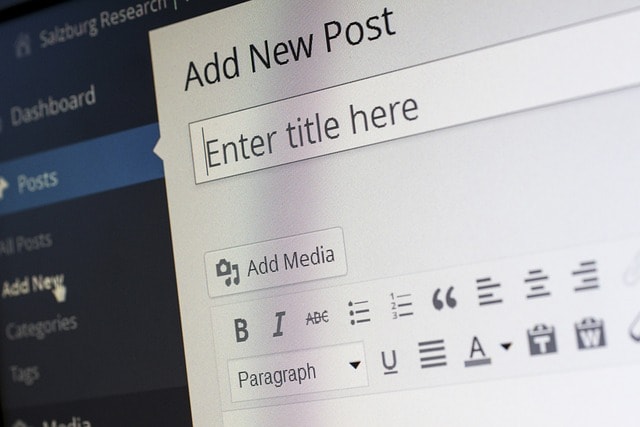Wondering how to start with blog? Start here. We guide you through choosing a niche, picking a blog name, getting hosting, setting up, and publishing your first post.
Table of Contents
Key Takeaways
Starting a blog in 2024 is a great opportunity, offering low startup costs and chances for personal branding and income generation.
The essential steps to launch your blog include choosing a niche, selecting a memorable blog name, securing web hosting, setting up on WordPress, and publishing your first post.
Effective blogging requires ongoing promotion, SEO strategies, and engagement with your audience to build a community and potentially monetize your content.
How to Start with Blog: A Step-by-Step Guide for 2024

Blogs remain highly relevant in 2024, with a thriving community of bloggers sharing their passions and expertise. Starting a blog offers numerous opportunities, from personal branding to sharing your interests and even making money. With the growth of the internet, there’s no better time to dive into blogging and connect with a global audience.
Starting a blog involves five steps: choosing a niche, selecting a blog name, getting web hosting, setting up your blog, and publishing your first post. This clear structure ensures your blog is ready to engage readers. Focusing on a niche helps attract a dedicated audience, and a memorable blog name and domain create a strong first impression.
Web hosting keeps your blog hosting accessible and running smoothly. A reliable provider ensures your blog stays online and secure, offering a seamless experience for visitors. Setting up your blog includes installing WordPress and customizing it to match your style and needs.
Writing and publishing your first post marks the beginning of your blogging journey, allowing you to share your unique voice with the world. This guide addresses common questions about starting a blog, choosing a niche, and monetization strategies, providing the tools and knowledge needed for success.
If you feel stuck or need advice, reach out for help. Blogging can be very profitable with low startup costs and potential monthly incomes that can be substantial. The direct connection with readers is also one of the most rewarding aspects.
Introduction
A blog is a regularly updated website that allows individuals to express their thoughts and connect with an audience, highlighting their passions. This guide is designed to help beginners start a blog in a straightforward manner, taking only about 20 minutes, regardless of age or technical skill. The process of starting a blog should be enjoyable, not daunting, and we’re here to make it as simple and fun as possible for you to create your own blog.
You don’t need to be an expert writer to succeed in blogging. The growing internet offers new bloggers a chance to reach potential audiences and connect with like-minded readers.
Whether you’re sharing hobbies, developing a personal brand, or creating a new income stream, this guide will walk you through every step to ensure your blog’s success.
Why You Should Start a Blog in 2024

In 2024, the internet continues to expand, making it an excellent time to start a blog. Anyone can start blogging, regardless of age, location, or experience level. Blogging offers significant income potential with low startup costs, making it an attractive option for many. Moreover, the barrier to entry has virtually disappeared, allowing more people to share their passions and expertise with the world.
Starting a blog can be highly profitable, with potential monthly incomes that can be substantial. Beyond financial gains, blogging provides an opportunity for personal branding, allowing you to establish yourself as an authority in your chosen field. Whether you’re passionate about cooking, traveling, fitness, or technology, there’s a niche audience waiting to connect with your content.
Blogs are thriving and remain highly relevant in 2024. They offer a direct way to engage with an audience, build a community, and share your voice. The process is straightforward: choose a niche, select a blog name, get web hosting, set up your blog, and publish your first post. Each step is designed to help you create a blog that reflects your interests and attracts readers.
If starting a blog seems unclear, readers can seek personalized advice. This guide provides clear instructions and support to help you navigate the blogging journey successfully.
Besides personal and financial benefits, blogging lets you share your passions and connect with a global audience. It’s a fulfilling way to express yourself, engage with others, and potentially impact your readers’ lives positively. So, why wait? Start blogging and join the thriving community of bloggers in 2024.
Choosing Your Blog Niche
Choosing a niche is crucial for starting a blog. It focuses your content, influences design and marketing strategies, and aids in audience discovery. A specific niche attracts a dedicated readership. When selecting a niche, explore topics you find interesting and are passionate about while ensuring there is proven demand for content.
To stand out in a crowded niche, differentiate yourself and your content. Your blog’s niche can grow and evolve over time, allowing for flexibility.
Examples like:
men’s fitness
raising kids
makeup
tech news
can inspire your niche brainstorming.
Start by creating a comprehensive list of potential blog topics to clarify your niche.
How to Identify Profitable Niches
When choosing a blog niche, focus on your passions or interests. Here are some steps to help you identify a viable blog topic:
List topics of interest to identify potential blog ideas.
If unsure, explore questions and check lists of profitable niches for inspiration.
Use keyword research tools to assess interest and competition in potential niches.
By following these steps, you can find a niche that aligns with your interests and has the potential for success.
Market demand is key to validating a niche’s profitability. A Monthly Search Volume of 5,000 – 10,000 suggests a potentially profitable niche. A good blog niche should be motivating, interesting to the author, and able to attract an audience.
Finding low-competition keywords targets weaknesses of established blogs and improves visibility. Examining competitors with strong web traffic indicates market viability. Identifying gaps in competitors’ content offers unique opportunities to attract and engage an audience.
Selecting a Blog Name and Domain
Choosing a blog name is crucial. A powerful name reflects the core message and intent behind the blog. A good name should be descriptive and suggestive of the blog’s content. Consider the core message and potential for future branding when choosing a name.
Check domain availability to ensure your desired blog name can be registered. Keep the domain name short, ideally under 15 characters, for better memorability and usability. A .com extension is advisable as it’s the most recognized and memorable for users.
Use a free domain name generator if you’re struggling to come up with a blog name.
Tools to Check Domain Availability
Namecheap features a tool called ‘Beast Mode’, which allows users to search for multiple domain names at once, making the domain availability check faster and more efficient. If your desired domain name is not available, try a different option or choose later.
When starting a blog, check the availability of your desired domain name to ensure it can be registered.
Tips for Choosing a Domain Name
A good domain name creates a first impression, serving as your blog’s web address and brand identity. When picking a name, analyze your niche and review industry blogs. Avoid hyphens, as they can make it appear spammy and cause typos.
A personal brand domain name should ideally include your name or a variation for easy recognition. Look for inspiration from other blogs and companies to generate ideas. Use domain name generators like Wordoid to expedite the search for an available and catchy domain.
If your preferred domain name is not available, brainstorm new ideas or check premium domain marketplaces for alternatives. Don’t overthink the choice; being flexible allows for pivoting without wasting effort.
Getting Your Blog Online: Web Hosting

Web hosting ensures your blog remains operational and accessible to users. It handles visitors, backs up the website, and provides support and security. The blog host stores files and delivers them to users. Choosing the right hosting provider is a crucial investment when starting a blog.
A self-hosted WordPress blog is hosted by a third-party company, allowing for customization and control. Investing in paid hosting can make your blog more lucrative. You need to pay for web hosting with a self-hosted blog.
Bluehost is recommended for new bloggers, known for its affordable pricing starting at $2.75 a month. Alternatively, WPX, WP Engine, Rocket.net, and Kinsta are also suggested. After deciding on a domain name, setting up hosting is the next step to get your blog online.
How to Choose a Web Hosting Plan
Choosing the right web hosting plan is crucial for your blog’s performance and success. Bluehost offers a 30-day money-back guarantee, making it a good deal for beginners. SiteGround’s StartUp plan is another recommended option.
When choosing a web hosting plan, consider pricing, features, and customer support. Bluehost’s Basic plan is $1.99/month with payment options for 1, 2, or 3 years upfront. A longer duration is recommended to lock in the lowest rate for 3 years.
Domain privacy is included with the 36-month hosting plan at $1/month during checkout. Choose a plan that offers the best balance between cost and features to ensure your blog runs smoothly.
Steps to Purchase Web Hosting
To purchase web hosting, select your desired plan by clicking the GET PLAN button. Enter your domain name and provide your account details, including your name, email, and address. Decline any extra services when prompted.
Review your order and click the PAY NOW button to complete the purchase. Congratulations, you now have web hosting, and your blog is ready to be set up online.
Setting Up Your Self-Hosted WordPress Blog
Setting up a self-hosted WordPress blog allows for greater monetization opportunities and flexibility compared to other blogging platforms. WordPress is widely recognized as a top blogging platform and powerful website builder. Using a self-hosted WordPress blogging platform requires web hosting and a domain name.
After signing up with a hosting provider like Bluehost, the next step is to install WordPress on your blog. There are plenty of tutorials and support available for new users. The self-hosted WordPress.org software is free to download and use, allowing users with no design experience to set up their blogs easily.
A Content Management System (CMS) like WordPress facilitates the design and publication of blog posts. Once installed, you can start customizing your blog and creating content.
Installing WordPress
WordPress installs automatically; log in after completion. SiteGround requires you to agree to the Terms of Service before completing the setup. After installation, click the ‘Log into WordPress’ button.
After logging in, click ‘Start Building’ to access the blogging dashboard. Here, you will manage your blog, create posts, and customize the design.
Accessing the WordPress Dashboard
To log into the WordPress dashboard, visit your login URL by adding /wp-admin to your domain name, enter your username and password, and click Log In. If you can’t remember your login information, search your email for welcome emails; check your spam folder too.
When starting a blog on WordPress, familiarize yourself with basic settings and dashboard functionalities. After installing WordPress, explore the admin area to become comfortable with its features.
Customizing Your Blog Design with Themes
Customizing your blog design with themes enhances user trust and engagement. Speed and functionality are more important than aesthetics. Choosing the right WordPress theme simplifies creating an appealing design.
WordPress themes are pre-designed templates that control the entire blog design. When selecting a theme, consider specific criteria to guide your decision. Free themes are typically lighter and more compatible with various plugins, making them a good choice for many users.
A theme allows you to choose a design without needing coding knowledge.
Best Free WordPress Themes for Beginners
Recommended free WordPress themes for beginners include Kadence WP, Elementor for WordPress, and Astra. Kadence is known for its ease of use and fast performance, making it a great choice for newcomers. Astra is recognized for its minimal design and fast performance, making it ideal for new bloggers.
Choosing a good theme is essential for beginners to create an engaging and effective blog. Selecting any of these themes will provide a solid foundation for beginners to customize their blogs effectively.
How to Install and Activate Themes
To install a theme from the WordPress dashboard, follow these steps:
Access the ‘Appearance’ menu.
Download a theme as a .zip file.
Upload the .zip file through the WordPress dashboard for installation.
Explore more themes in the WordPress repository by clicking the ‘Install’ button after selecting a theme.
Activating a new theme can easily be done by clicking the ‘Activate’ button after installation. This allows you to see your new design live on your blog immediately.
Essential WordPress Plugins
Plugins are applications developed by third parties. They enhance the functionality of a blog. WordPress plugins enhance blog functionality and optimize performance for users and search engines. However, using unnecessary plugins can lead to website performance issues. Plugins can unlock more customizations of blog design and functionality.
An essential search engine optimization plugin to consider is the Yoast SEO plugin. It is recommended to use one performance plugin for optimizations and one for caching. Limiting the number of plugins used on a blog is advised, as too many can slow down your site. Poorly coded plugins can lead to your site slowing down, so it’s important to choose well-coded plugins.
There are over 59,000 free or freemium plugins available in the WordPress.org repository, offering a variety of functionalities. Choosing the right plugins is crucial to the success of your blog.
Must-Have Plugins for New Blogs
Perfmatters, WP Rocket, FlyingPress, WP Fastest Cache, and Solid Performance are recommended performance plugins for a blog. Yoast SEO and The SEO Framework are recommended SEO plugins for beginners. The Yoast SEO plugin improves your blog’s SEO.
Cloudflare’s Turnstile is suggested for protecting forms against spam, and Antispam Bee is a recommended anti-spam plugin for blog comments. Social Warfare and Novashare are solid options for social sharing plugins.
How to Install and Activate Plugins
To access the WordPress dashboard, log in to your WordPress site and navigate to the admin area. Search for plugins by going to the ‘Plugins’ section, then click ‘Add New’ and use the search bar to find the desired plugin. After finding the plugin, click the ‘Install’ button.
Once the plugin is installed, click the ‘Activate’ button to enable it on your blog. This process allows you to add new functionalities to your blog easily and quickly.
Creating Your First Blog Post
Creating your first blog post is an exciting milestone. Start writing your blog posts by clicking on ‘Posts’ and then ‘Add New’ in your WordPress dashboard. Use a blog idea generator or refer to a content calendar to inspire your topics and maintain a flow of ideas.
Craft a compelling introduction by quickly answering who, what, where, when, and why to engage your readers. Ensure your blog contains high-quality content, which is essential for growing your audience and building your brand. After writing, click the ‘Publish’ button, making your content available to the public.
Enjoy the journey of blogging, as it can be a significant growth experience. Writing blog posts allows you to share your passions and connect with readers.
Tips for Writing Engaging Content
An alluring post title and a clear definition of the topic are essential for defining blog content. Writing a blog post headline that encourages readers to click through attracts audiences and delivers on article promises. Popular headline types include list and ‘how to’ headlines, which tend to draw more interest.
Using subheaders can help break up text, making it easier for readers to digest the information presented. A compelling blog post should start with an intriguing title and a clear definition of what the content will cover. Avoid huge paragraphs, excessive punctuation, and complex words to maintain readability.
Content should be simple, pleasurable, and easy to skim for better reader engagement. An effective attention-grabbing sentence makes the reader want to read more and forces questions. A good hook for a blog leads readers to ask questions, increasing the likelihood of engagement.
Adding Images and Media
Incorporating images in blog posts can significantly increase viewer engagement, with posts containing visuals receiving 94% more views. To add an image to your blog post, click the ‘Add Image’ icon, then ‘Upload’ to select an image.
Yes, it is acceptable to use stock photos on your blog if obtained legally and credited. To make posts more engaging, consider including videos or interactive content alongside images.
Basic Search Engine Optimization (SEO)
Understanding and implementing SEO strategies is crucial for attracting traffic to your blog and improving visibility in search engine results. Conduct keyword research using tools like SEMrush or Google Keyword Planner to find relevant terms for your blog topic and integrate them into your content and domain name. Submit your blog to search engines and ensure that your blog visibility settings allow search engines to find your content.
Building backlinks by linking to authoritative sources and acquiring links from reputable sites significantly boosts your blog’s authority and search engine rankings. Effective SEO can make your blog more discoverable, helping you reach a larger audience.
On-Page SEO Best Practices
Incorporating relevant keywords in the title, headings, and throughout the content can improve a blog’s search engine ranking. Meta descriptions should be engaging and include targeted keywords to entice users to click on the search result.
Images should have descriptive alt text, which not only helps with SEO but also improves accessibility for users. These on-page SEO practices are essential for optimizing your blog content and improving its visibility on search engines.
Creating an XML Sitemap
A sitemap acts as a roadmap for search engines, helping them navigate and index the content on a blog effectively. Submitting a sitemap can expedite the indexing process, ensuring that new content is discovered more quickly by search engines.
Creating an XML sitemap is a simple yet powerful way to improve your blog’s SEO. It helps search engines understand the structure of your site and find all your content efficiently.
Learn more, checkout How to Create and Submit a XML Sitemap
Promoting Your Blog
Promoting your blog is essential to attract readers and grow your audience. Regularly updating existing blog content can help boost traffic by keeping it relevant and engaging. Creating data-driven content can significantly enhance your blog’s appeal and attract attention. Interacting with blog visitors encourages them to return and can build a community around your blog.
Collaborating with other bloggers through guest posting and mutual promotion can expand your reach. Promoting your blog in online communities such as Facebook groups, LinkedIn groups, niche forums, and Reddit can expand your audience. Joining forums and message boards for bloggers can offer a better return on time than traditional social media.
Reaching out to influencers can be an effective strategy for gaining introductions to new audiences. Effective SEO can significantly enhance a blog’s visibility, making it easier for potential readers to find the content through search engines. Encouraging readers to interact, ask questions, and join your email list can help foster a loyal audience.
Using Social Media
Social media platforms are essential for increasing visibility and engaging with a larger audience. Social media platforms can be integrated with your blog to enhance visibility and audience engagement. An effective social media promotion strategy is to focus on one social media platform.
Determine which social media platform to focus on by considering where your ideal readers are. Consider the platform’s suitability for your niche and audience interests when choosing a social media platform. When promoting your blog, it’s effective to post links to new content and leverage friends to share.
Engage with followers by posting relevant news and links to other sources, not just your blog. Experiment with different social networks to see which ones perform best for your content. Publishing videos on YouTube can be an integral part of a blogger’s promotional strategy.
Building an Email List
An email list allows direct communication with readers and is crucial for driving repeat traffic. Establishing an email list allows for direct communication with your audience and nurtures ongoing engagement. Starting an email list on the first day of blogging is crucial for building an audience.
Offering an incentive, known as an ethical bribe, can encourage visitors to subscribe to your email list. Plugins like OptinMonster and Convert Pro can be used to place opt-in forms on a blog.
Building an email list early ensures you have a loyal audience that you can reach out to directly.
Monetizing Your Blog
Monetizing a blog can transform it into a source of income through various strategies. Some ways to monetize your blog include business partnerships, affiliate marketing, sponsored content, and ads. A well-defined niche can lead to monetization possibilities such as affiliate marketing and sponsored content. Selling physical products can be another monetization avenue, utilizing print-on-demand services to fulfill orders.
Digital downloads like ebooks, video tutorials, and e-courses can be sold for passive income. Podcast sponsorships can help monetize your blog through audio content. Webinars can serve as a monetization method, allowing bloggers to charge admission or use them to promote products.
Native advertising involves displaying ads or sponsored content on your blog for revenue generation.
Affiliate Marketing
Affiliate marketing involves promoting products and earning commissions for sales made through referral links. To earn money through affiliate marketing, join an affiliate program, get a tracking link, place that link in your posts, and earn a fee or percentage for referrals. Affiliate marketing enables bloggers to earn commissions by promoting products or services relevant to their audience.
To be successful in affiliate marketing, it is crucial to select trustworthy affiliate products and disclose your affiliate status to readers. Transparency is essential as bloggers’ reputations are tied to their endorsements. This method can provide passive income, making it a popular monetization strategy for bloggers.
Sponsored Content and Ads
Sponsored posts and advertisements are common monetization methods for bloggers, providing a valuable opportunity to enhance income. Bloggers can earn significant income from ads, with potential earnings of $1,500 per month for those with 300,000 to 500,000 readers. Advertisers can use Google AdSense to automate ad placements on blogs, simplifying the ad management process and providing income.
Creating sponsored content is different from affiliate marketing, as bloggers are paid for the content itself rather than for sales. Sponsored content allows bloggers to collaborate with brands and create valuable, relevant content for their audience while earning income.
Summary
Starting a blog in 2024 offers numerous opportunities, from personal branding and income potential to sharing your passions with a global audience. This guide has walked you through the essential steps to create a successful blog, from choosing a niche and selecting a blog name to setting up web hosting and customizing your blog’s design. By following these steps, you’ll be well on your way to publishing engaging content and growing your audience.
Remember, the key to a successful blog is consistency, quality content, and effective promotion. Regularly update your blog, interact with your readers, and leverage social media and email marketing to expand your reach. Monetizing your blog through affiliate marketing, sponsored content, and ads can turn your passion into a profitable venture.
We hope this guide has provided you with the knowledge and confidence to start your blogging journey. Now it’s time to take action, create your blog, and share your voice with the world. Happy blogging!
Frequently Asked Questions
Do I need to be an expert writer to start a blog?
You definitely don’t need to be an expert writer to start a blog! Just focus on having fun and sharing your thoughts, and you’ll be good to go.
How much does it cost to start a blog?
Starting a blog can be quite affordable, with expenses like domain registration and web hosting. For example, Bluehost offers hosting from just $2.75 a month, making it easy to get going!
How do I choose a profitable blog niche?
To choose a profitable blog niche, focus on what you’re passionate about and use keyword research to gauge market demand. Also, analyze your competitors to find gaps and opportunities in the market.
What are the best ways to promote my blog?
To effectively promote your blog, focus on social media sharing, collaborate with other bloggers, optimize your content for SEO, and start building an email list. These strategies will help you reach a wider audience and boost your blog’s visibility.
How can I monetize my blog?
You can monetize your blog effectively by utilizing affiliate marketing, incorporating sponsored content, displaying ads, and selling digital products or courses. Each method can help you generate income while sharing your passion!









